
An opera house is a theatre building used for performances of opera. It usually includes a stage, an orchestra pit, audience seating, and backstage facilities for costumes and building sets.
While some venues are constructed specifically for operas, other opera houses are part of larger performing arts centers. Indeed, the term opera house is often used as a term of prestige for any large performing-arts center.
History

Italy is a country where opera has been popular through the centuries among ordinary people as well as wealthy patrons and it continues to have many working opera houses[1] such as Teatro Massimo in Palermo (the biggest in Italy), Teatro di San Carlo in Naples and Teatro alla Scala in Milan. The Teatro San Cassiano in Venice was the world's first public opera house, inaugurated as such in 1637.[2]
There was no opera house in London when Henry Purcell was composing and the first opera house in Germany, the Oper am Gänsemarkt, was built in Hamburg in 1678, followed by the Oper am Brühl in Leipzig in 1693, and the Opernhaus vorm Salztor in Naumburg in 1701.
In the 17th and 18th centuries, opera houses were often financed by rulers, nobles, and wealthy people who used patronage of the arts to endorse their political ambition and social position. With the rise of bourgeois and capitalist social forms in the 19th century, European culture moved away from its patronage system to a publicly supported system.
Early United States opera houses served a variety of functions in towns and cities, hosting community dances, fairs, plays, and vaudeville shows as well as operas and other musical events. In the 2000s, most opera and theatre companies are supported by funds from a combination of government and institutional grants, ticket sales, and private donations.
Other uses of the term
In the 19th-century United States, many theaters were given the name "opera house", even ones where opera was seldom if ever performed. Opera was viewed as a more respectable art form than theater; calling a local theater an "opera house" therefore served to elevate it and overcome objections from those who found the theater morally objectionable.[3][4]
Gallery
 The Royal Opera House, London
The Royal Opera House, London.jpg.webp)

.JPG.webp) The Vienna State Opera in Austria
The Vienna State Opera in Austria The Palais Garnier in Paris, France
The Palais Garnier in Paris, France.jpg.webp) Mariinsky Theatre in Saint Petersburg, Russia
Mariinsky Theatre in Saint Petersburg, Russia.jpg.webp) The Sydney Opera House is one of the world's most recognisable opera houses and landmarks
The Sydney Opera House is one of the world's most recognisable opera houses and landmarks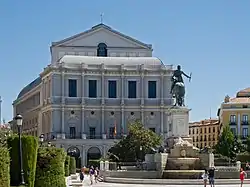 Teatro Real in Madrid, Spain
Teatro Real in Madrid, Spain Teatro Colón in Buenos Aires, Argentina
Teatro Colón in Buenos Aires, Argentina The Teatro alla Scala in Milan, Italy
The Teatro alla Scala in Milan, Italy
.jpg.webp)
.jpg.webp) Hungarian State Opera House in Budapest, Hungary
Hungarian State Opera House in Budapest, Hungary
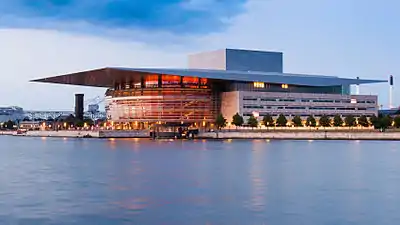 The Copenhagen Opera House in Denmark
The Copenhagen Opera House in Denmark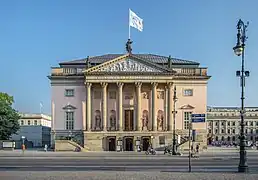 The Berlin State Opera on Unter den Linden, Germany
The Berlin State Opera on Unter den Linden, Germany_-_Facade.jpg.webp)
 New National Theatre Tokyo in Tokyo, Japan
New National Theatre Tokyo in Tokyo, Japan Grand Theatre in Warsaw, Poland
Grand Theatre in Warsaw, Poland
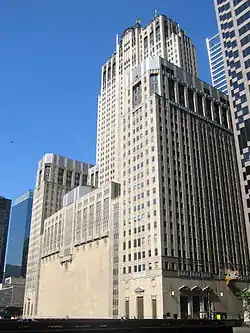 The Civic Opera House in Chicago
The Civic Opera House in Chicago Royal Theatre of La Monnaie in Brussels, Belgium
Royal Theatre of La Monnaie in Brussels, Belgium Zürich Opera House in Zürich, Switzerland
Zürich Opera House in Zürich, Switzerland The Vlaamse Opera in Antwerp, Belgium
The Vlaamse Opera in Antwerp, Belgium The National Theatre in Prague, Czech Republic
The National Theatre in Prague, Czech Republic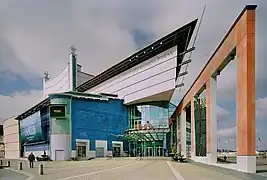 Gothenburg opera house in Sweden
Gothenburg opera house in Sweden
 Finnish National Opera and Ballet in Helsinki, Finland
Finnish National Opera and Ballet in Helsinki, Finland_facciata_piacentini_1010030.JPG.webp) The Teatro dell'Opera di Roma in Rome, Italy
The Teatro dell'Opera di Roma in Rome, Italy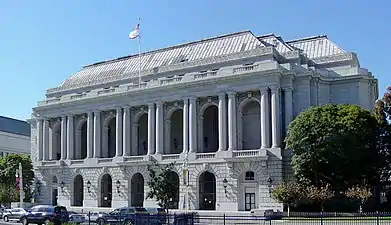
.jpg.webp) Grand Théâtre in Geneva, has the largest stage in Switzerland
Grand Théâtre in Geneva, has the largest stage in Switzerland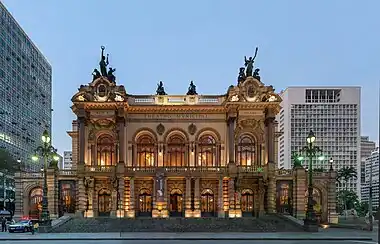 Theatro Municipal in São Paulo, Brazil
Theatro Municipal in São Paulo, Brazil Oper Frankfurt in Frankfurt, Germany
Oper Frankfurt in Frankfurt, Germany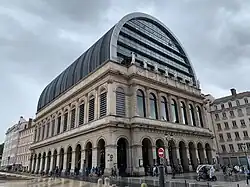
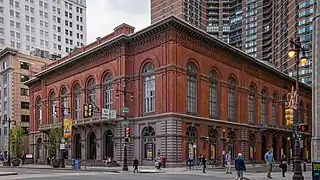 The Academy of Music in Philadelphia, the oldest opera house in the US
The Academy of Music in Philadelphia, the oldest opera house in the US Four Seasons Centre in Toronto, Canada
Four Seasons Centre in Toronto, Canada
.jpg.webp) The Opéra de Monte-Carlo in Monaco
The Opéra de Monte-Carlo in Monaco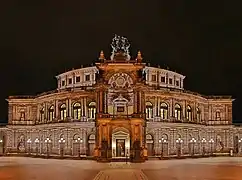 The Semperoper in Dresden, Germany
The Semperoper in Dresden, Germany The Estates Theatre in Prague (Czech Republic) is the only theatre left standing where Mozart performed
The Estates Theatre in Prague (Czech Republic) is the only theatre left standing where Mozart performed The Bayreuth Festspielhaus in Bayreuth (Germany) was built by Richard Wagner and dedicated solely to the performance of his stage works
The Bayreuth Festspielhaus in Bayreuth (Germany) was built by Richard Wagner and dedicated solely to the performance of his stage works Amazon Theatre in Manaus, Brazil
Amazon Theatre in Manaus, Brazil
See also
References
Notes
- ↑ "Great Opera Houses of the World". BBC. Archived from the original on Feb 15, 2009.
Opera was always popular among ordinary people as well as among the rich, so that there was a large audience available.
- ↑ Mancini, Franco; Povoledo, Elena; Muraro, Maria Teresa (1995). I Teatri del Veneto - Venezia. Vol. Tomo 1. Venice: Corbo e Fiore. pp. 97–149.
- ↑ Condee, William Faricy (2005). Coal and Culture: Opera Houses in Appalachia. Athens, Ohio: Ohio University Press. p. 6. ISBN 0-8214-1588-3.
The term 'opera house' is indeed misleading, and intentionally so; it provides a veneer of social and cultural respectability and avoids the stigma of the title 'theater.'
- ↑ "The Name Opera House". Dramatic Mirror. March 7, 1885.
Sources
- Allison, John (ed.), Great Opera Houses of the World, supplement to Opera Magazine, London 2003
- Beauvert, Thierry, Opera Houses of the World, The Vendome Press, New York, 1995. ISBN 0-86565-978-8
- Beranek, Leo. Concert Halls and Opera Houses: Music, Acoustics, and Architecture, New York: Springer, 2004. ISBN 0-387-95524-0
- Hughes, Spike. Great Opera Houses; A Traveller's Guide to Their History and Traditions, London: Weidenfeld & Nicolson, 1956.
- Kaldor, Andras. Great Opera Houses (Masterpieces of Architecture) Antique Collectors Club, 2002. ISBN 1-85149-363-8
- Lynn, Karyl Charna, Opera: the Guide to Western Europe's Great Houses, Santa Fe, New Mexico: John Muir Publications, 1991. ISBN 0-945465-81-5
- Lynn, Karyl Charna, Italian Opera Houses and Festivals, Lanham, Maryland: The Scarecrow Press, Inc., 2005. ISBN 0-8108-5359-0
- Plantamura, Carol, The Opera Lover's Guide to Europe, Citadel Press, 1996, ISBN 0-8065-1842-1
- Sicca, Luigi Maria, "The management of opera houses: The Italian experience of the Enti Autonomi", Taylor & Francis, International Journal of Cultural Policy, 1997, ISSN 1028-6632